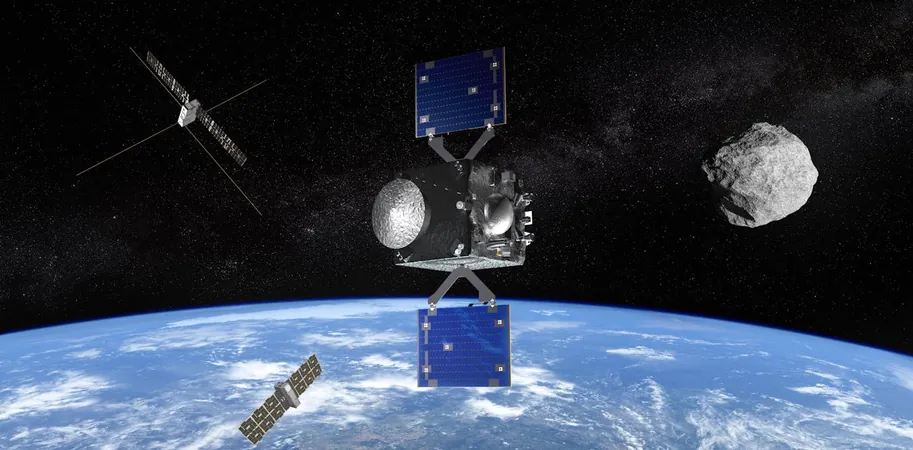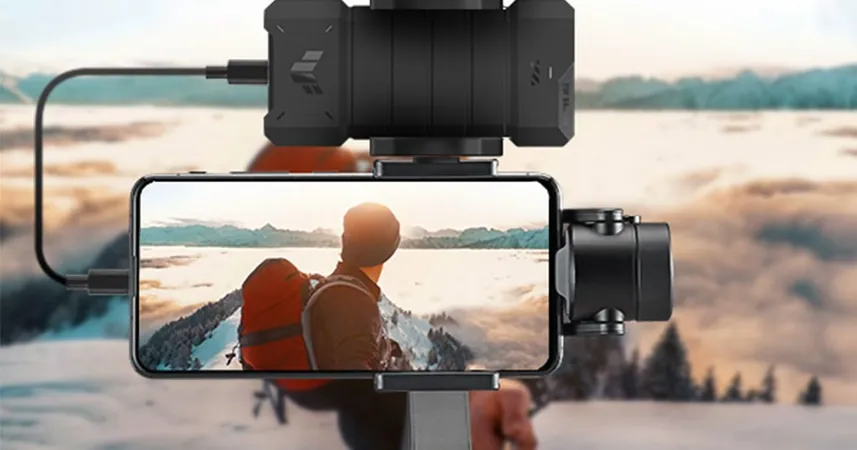
Asteroid Apophis: Europe's Groundbreaking Mission to Unlock Secrets of a Planetary Menace
2024-11-01
Author: Wei
In an exciting development, the European Space Agency (ESA) has officially launched preliminary efforts for a mission aimed at the notorious asteroid (99942) Apophis. If the project, dubbed the Rapid Apophis Mission for Space Safety (Ramses), receives the green light in a critical meeting set for next year, a robotic spacecraft is scheduled to rendezvous with this colossal space rock in February 2029.
Apophis, measuring an imposing 340 meters in diameter—roughly equivalent to the height of the iconic Empire State Building—poses a significant threat to Earth. While it won't collide with our planet during its close flyby, the asteroid’s potential impact has made it a focal point for asteroid studies. Should it strike Earth, the catastrophic consequences would be on par with the destructive power generated by multiple nuclear bombs, wreaking havoc over hundreds of miles.
On April 13, 2029, Apophis will pass a mere 19,794 miles (31,860 kilometers) from Earth—about one-twelfth of the distance to the Moon. This unprecedented close approach allows scientists from NASA and ESA to send separate robotic missions to further investigate this enigmatic asteroid.
Asteroids: Earth's Eternal Threat
Asteroids like Apophis are remnants from the early days of our solar system, spanning over 4.5 billion years ago. A historic reminder of their destructive potential can be traced back 66 million years to when a city-sized asteroid heralded the end of the dinosaurs through a global extinction event. Today, Earth remains under constant threat from the debris in the asteroid belt, home to over a million sizable objects, some hundreds of kilometers wide.
Of particular concern are the “near-Earth objects” (NEOs), which total around 35,000. Among these, approximately 2,300 are categorized as “potentially hazardous objects” (PHOs) because their orbits intersect with Earth’s path, heightening fears of a future collision.
Funding Earth's Defense: Ramses and Osiris-Apex
The Ramses mission aims to closely monitor Apophis as it approaches our planet, seeking to understand how its orbit, rotation, and structure may change under Earth's gravitational influence. This mission will coincide with the Osiris-Apex, a renamed and repurposed spacecraft originally intended for a mission to the asteroid Bennu. Osiris-Apex will commence its study of Apophis shortly after the 2029 flyby, collecting vital data that could be instrumental in future planetary defense strategies.
By understanding how different types of asteroids, including potentially hazardous ones like Apophis, react to external forces, researchers hope to devise effective deflection methods. Classic Hollywood methods, like detonating the asteroid, won't suffice; fragmenting it into smaller pieces would still pose a significant threat.
A Rare Cosmic Encounter and Its Mythical Echoes
The upcoming close encounter with Apophis represents humanity's rare chance to study such a large asteroid firsthand—a phenomenon that occurs only once every 5,000 to 10,000 years. As humanity prepares for this significant event, it echoes the ancient Egyptian mythology surrounding the entity Apophis, a serpent representing chaos and darkness that battled against the sun god Re.
It’s awe-inspiring to consider that while today’s scientists aim to thwart a cosmic disaster, ancient cultures spun beautiful tales that encapsulate the struggle between order and chaos. In this sense, the Ramses mission and Osiris-Apex not only aim to protect Earth but also connect modern aspirations with the archetypal narratives of human history.
As we gear up for these missions, the lessons learned could one day shape our approach to safeguarding Earth from future asteroid threats. The cosmic drama continues, and we’re just beginning to write our chapter in this unfolding story. Stay tuned—this isn't just science; it’s a journey into the very fabric of our existence!





 Brasil (PT)
Brasil (PT)
 Canada (EN)
Canada (EN)
 Chile (ES)
Chile (ES)
 España (ES)
España (ES)
 France (FR)
France (FR)
 Hong Kong (EN)
Hong Kong (EN)
 Italia (IT)
Italia (IT)
 日本 (JA)
日本 (JA)
 Magyarország (HU)
Magyarország (HU)
 Norge (NO)
Norge (NO)
 Polska (PL)
Polska (PL)
 Schweiz (DE)
Schweiz (DE)
 Singapore (EN)
Singapore (EN)
 Sverige (SV)
Sverige (SV)
 Suomi (FI)
Suomi (FI)
 Türkiye (TR)
Türkiye (TR)